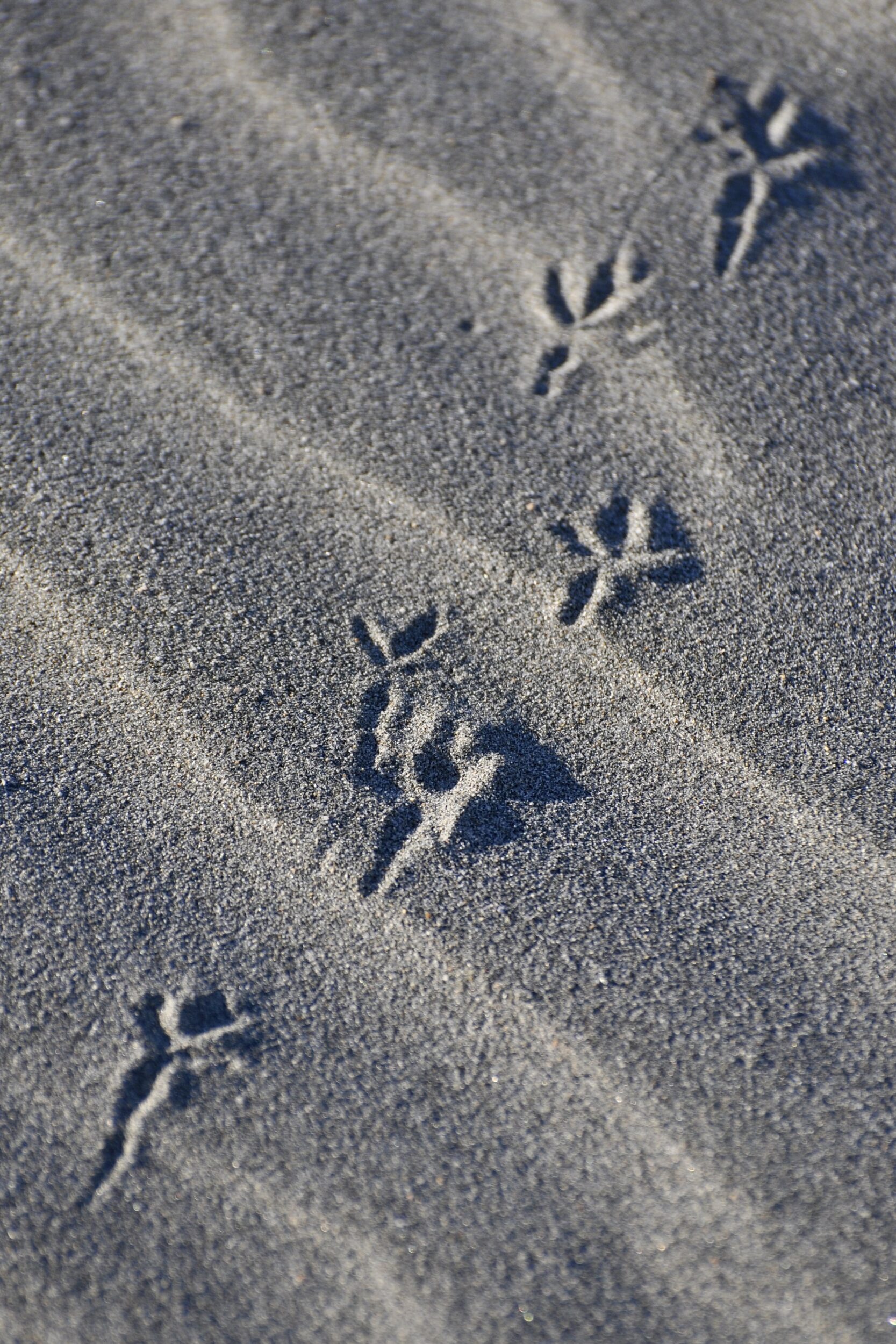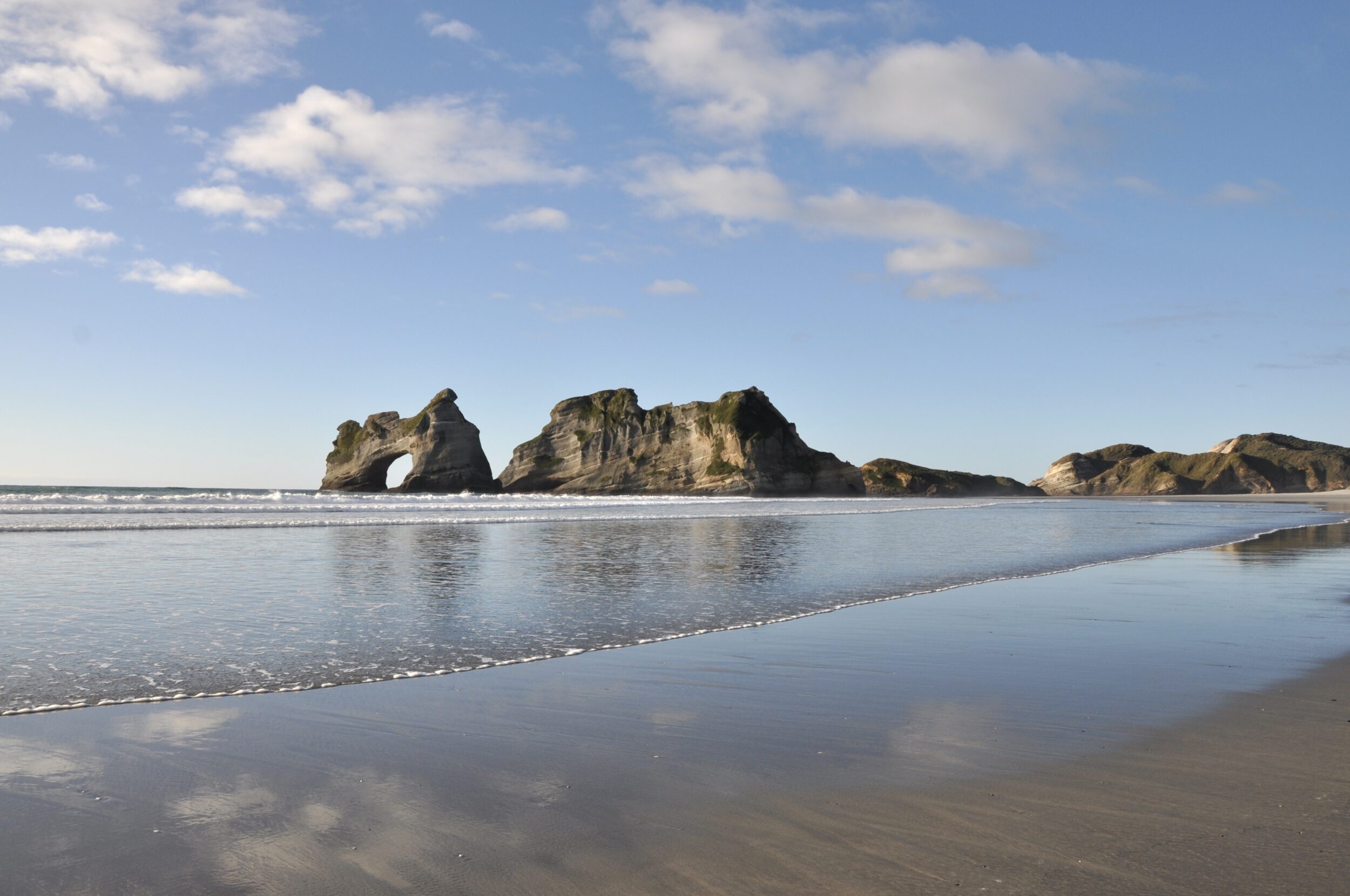Wharariki is often cited as New Zealand’s most beautiful beach.
It is quite easy to reach, but its “remote” location – on the northwest “corner” of New Zealand’s South Island, – still keeps visitor numbers relatively low.
Screensavers are now out of favour, but for some years an image taken from a cave on Wharariki Beach was Windows 10’s default.
Thus – mostly, unwittingly – many millions of human eyes have (vicariously) looked across Wharariki’s sands to the Archway Islands.
My beloved and I visited Wharariki on an uncharacteristically mild, calm and fine winter’s day in 2010.
On such a day, wetted sands can become mirrors.
Wet sand on a beach can also vividly record the footprints of whatever creatures walk, run or scuttle along it.
Such “recordings” usually have very brief lives – their erasure can be just one wave-break or a wind-gust away.

Click here for geological information; sand is the byproduct of the “breaking down” of rock/rocks.

Sands can also be compressed, then uplifted, and “born again” as sandstones.
The Archway Islands are a spectacular example of the latter process. (in part..they are also part-comprised of conglomerate, “pebbly” rock, similar to what you can see – close-up – in the photo above)

There is more information on Wharariki – and another image – in this post.
